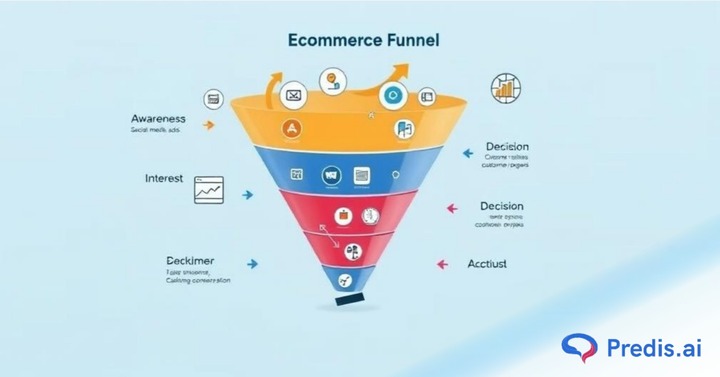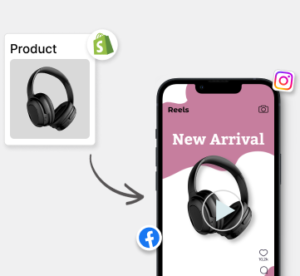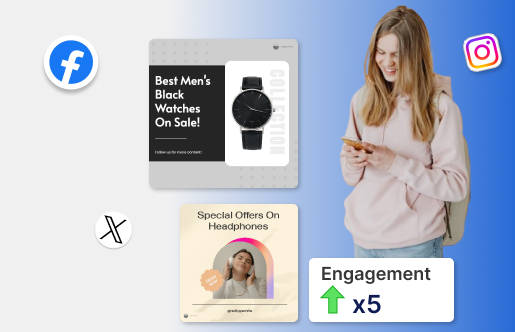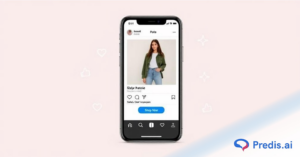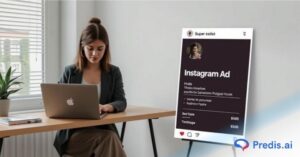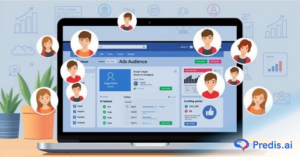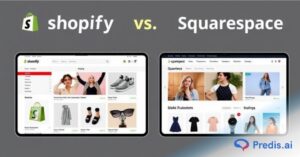Creating a sales funnel with a high conversion rate is crucial for the expansion and viability of an e-commerce business.
You need strategies and procedures in place to grow and turn these potential clients into actual consumers because a large number of individuals are unlikely to buy on their initial visit.
This comprehensive guide discusses end-to-end strategies on how to create an e-commerce sales funnel, key phases, effective tips to ensure high-end performance, and more. Let’s dive in!
An Overview of E-commerce Sales Funnel
A theoretical structure for describing the various steps a potential client takes when making a buying decision on the Internet is called an e-commerce sales funnel. The funnel depicts the customer’s drive rather than a predetermined route or procedure.
It is essentially a method of grouping all your prospective online clients into distinct groups according to how likely they will become actual clients.
For instance, a buyer may see your Facebook advertisement first, press on it to go to a sales page, and then proceed to the checkout page to complete the buying. To encourage additional sales, you have the option of following up with promotional emails and post-purchase upsell deals.
5 Stages of an E-Commerce Sales Funnel
There are usually four to five phases in an e-commerce funnel. Each company has a distinct marketing approach.
For instance, some firms could rely on content created by users to drive conversion and social media to raise exposure, whereas a different business would do vice-versa.
Stage 1: Awareness
The awareness stage of the funnel aims to draw in potential customers to visit your website.
Examining how you drew in these customers—through social media, search engine optimization, pay-per-click advertising, blogs, etc.—is the initial step. Lead generation encompasses several methods such as outbound advertising strategies, inbound promotional tactics, and referrals – every means by which someone can obtain information about your company, goods, and services.
Examine your click-through rates together with other marketing indicators to find out what phrases, ideas, and messaging your target audience finds appealing.
Ensuring that you are aiming for the correct audience is the subsequent stage. You’re squandering time and money on e-commerce promotion, and the website’s total conversion rate will suffer if you’re drawing in an improper category of customers.
Stage 2: Consideration
Your goal at this stage of the conversion funnel is to get customers interested in your good or service.
In this case, building stronger relationships with consumers is your goal, and email advertising campaigns together with your online store’s products and blog posts are great ways to do this. Newsletters, mailing lists, and sign-up forms are excellent channels for doing this.
Concentrate on perfecting captivating elements like headlines, banners, and carousel pictures if you want to raise your subscription rate. Create engaging content and ensure that your site’s homepage, landing pages, and blog articles are all well-designed.
Stage 3: Desire
Following on the fascination phase, where you now have a buyer’s interest, your goal in this stage is to convince them that prospective consumers desire what you are offering.
Make use of more sophisticated, visually striking components that draw attention to the specifics. Offering excellent product images, enticing product descriptions, fantastic product alternatives, and engaging product videos is a pragmatic spot to begin.
Aim for some excellent feedback on products as you close deals. A consumer is in the contemplation phase right now, so it’s important to provide them with all of the data they require to resolve their problems and make wise judgments.
Stage 4: Conversion
At this stage, customers perform the requested action.
Here, concentrate on the product funnel pages to make sure you’re cutting down on barriers and doing everything you can to get customers to add products to their carts. Next, review your checkout process by adding pertinent details and responding to frequently asked queries.
It makes sense to improve your checkout process to lower cart abandonment rates since little changes made throughout the checkout process may have a big impact.
Stage 5: Post Purchase
This last phase holds great significance for e-commerce enterprises. Turnover is key to expanding an online shop, so once someone has performed the necessary steps and purchased from your e-commerce site, you should draw these very specific consumers again in the funnel and urge them to make further purchases.
Motivate them to subscribe to your periodic emails or social media accounts so you may subsequently market to them to promote repeat business and sales. Additionally, you can email them an offer or voucher.
You must guarantee that they know how much you respect their choices and entice them to come back by providing loyalty incentives with their shipment in addition to growing your product range or services.
Main Elements of Funnel Optimization
Here are the main elements of an e-commerce sales funnel that record every phase of the customer journey and provide the most effective ways for marketers to connect with them along the way.
1. Home Page
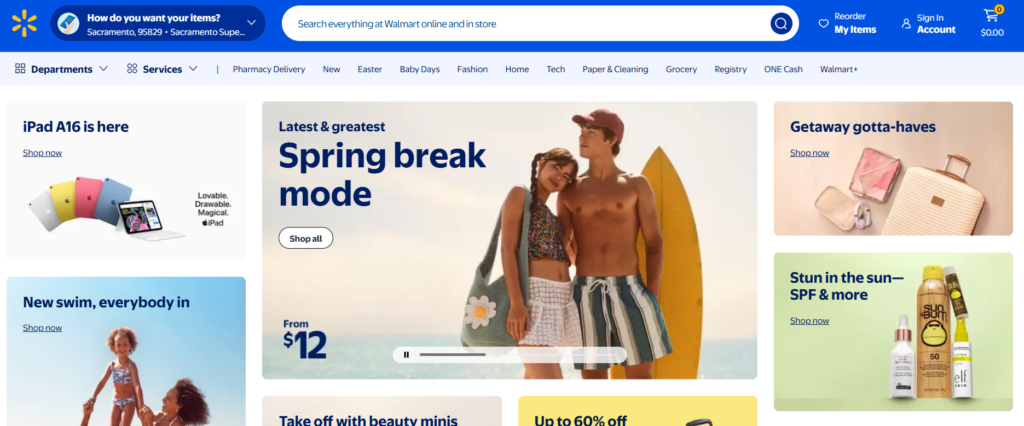
The homepage is the initial step and the area of your website that most visitors are going to explore first. Make sure to include attention-grabbing content and graphics on your site, along with elements like client endorsements or ratings.
The effectiveness of the beginning of the client’s experience can be determined by the homepage, which is frequently where customers make their initial assessment of your company.
2. Product Listing
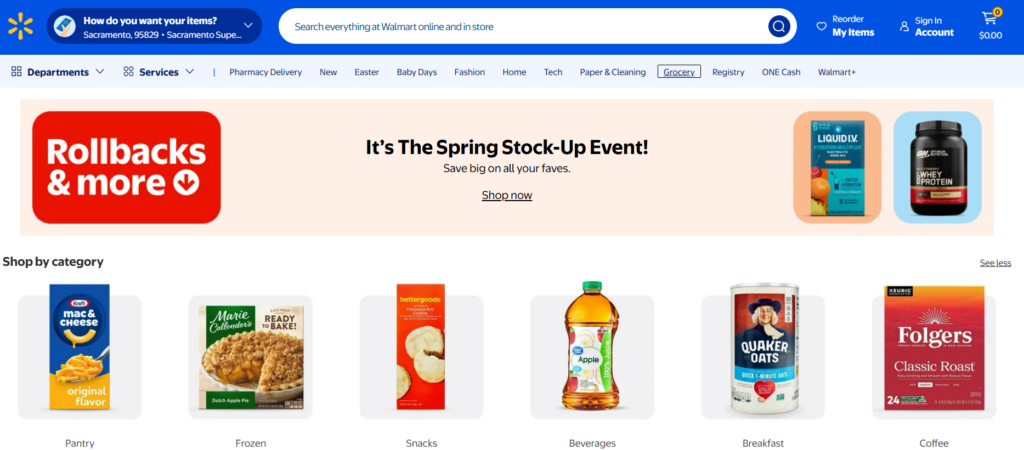
Buyers who are intrigued by an item will employ a variety of techniques to get what they need from the initial page of the website; it is your responsibility to ensure that the procedure runs smoothly.
Make sure your search tabs, suggestion engine, and layout are clear, simple to use, and guide users to the appropriate place to maximize the effectiveness of the experience.
3. Shopping Cart
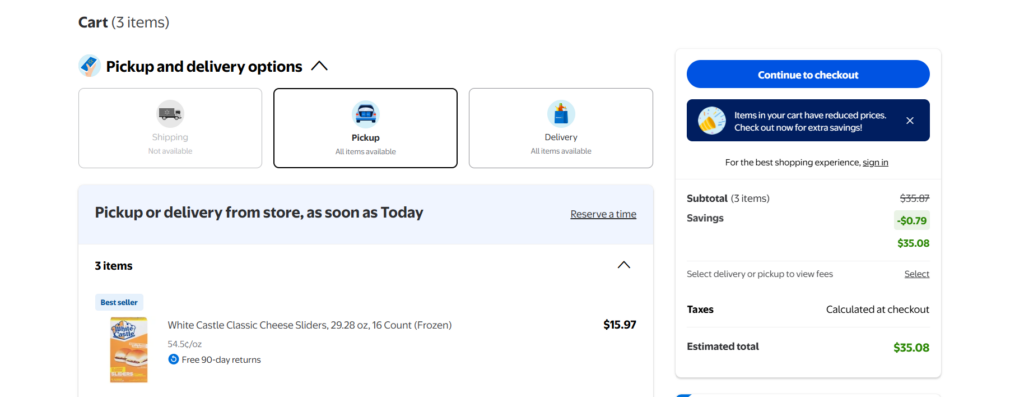
The following step is to add the product to the shopping basket once the buyer has chosen anything they wish to buy. Consumers need to be able to easily see the cart; otherwise, you risk losing an essential lead.
The consumer has two options at this point: either go on to the next page or come back to look for other items, which presents another chance for firms to upsell and cross-sell.
4. Checkout Page
The final stage before conversion is the checkout procedure when clients provide the necessary data to complete the purchase.
But just because they’ve reached the point of checkout doesn’t imply the deal will go through. Just before the last step, you risk losing the consumer due to a subpar user funnel experience or insufficient payment alternatives.
Make sure that the checkout page is as functional and user-friendly as it can be.
5. Order Fulfillment and Shipping
Orders must be fulfilled and dispatched once the buyer completes their checkout.
The client’s or your company’s journey continues even after the purchasing phase is over. Circumstances can still transpire that lead to the termination of the sales know-how, such as your items running out of inventory or a consumer canceling the purchase.
You should ensure that everything proceeds as planned and that your stock inventories are fully loaded and prepared to use. Not only may an order processing or shipment problem ruin a single transaction, but it can also drive away a consumer to the point where they never come back.
Design Sales Funnel for E-Commerce in 8 Effective Steps
Let’s now examine strategic ways to guide visitors through every phase of the buyer’s experience with ease.
Step 1: Make Your Website and Product Pages More Conversion-Friendly
Constructing a website and merchandise pages that purchasers have faith in should come before considering remarketing or post-purchase funnel setup. Since most online purchases don’t include human contact, it’s important to make use of a few essential components, such as:
- Superior pictures
- Animated clips or product videos
- Proof of legitimacy created by users
- Reviews of products and ratings
- A prominent call to action (CTA)
Step 2: Composing Attractive Product Copy
Product copywriting is another essential component of product pages that merits its section. An enlightened consumer has a far higher chance of making a purchase when it involves internet sales.
Try to stay away from dull phrases and uninspired features even if you still want to incorporate all the product specs. Instead, appeal to your target client directly and convey the details that they want while showcasing the individuality of your business.
Step 3: Make Use of FAQs and Live Support Features
Most of the visits to your e-commerce site will likely be new customers unless you are an Amazon seller. As a result, you must earn their confidence and respond to any inquiries they may have regarding their order.
Using a readily accessible FAQ is one of the greatest methods to do this. Your customer service department is your second line of defense if your FAQ is unable to address the customer’s query.
The value of having a timely support crew cannot be overstated when it involves your sales funnel; be sure you utilize an effective email ticketing system or a live chat window to reply quickly. Before making an order, many consumers simply wish to verify that you genuinely answer their inquiries.
Step 4: Provide Rewards and Upsell
One of the finest strategies for scaling an e-commerce shop is to raise your average order value (AOV). You must incorporate rewards and upsells into your e-commerce funnel to achieve this.
Upselling and promotional techniques that work well include product bundles, “shop extra, save extra” offers, and free delivery on purchases that exceed a certain threshold.
Step 5: Configure Abandonment Cart
One of the easiest ways to boost profit when optimizing your sales funnel is by implementing a cart abandonment mail campaign.
An example of a common cart abandonment cycle would be as follows:
- A reminder e-mail is sent as soon as possible, between 15 to 30 minutes after the abandonment
- Within a day, a follow-up email is sent out, usually with a discount
- Within two to three days, a “Last Opportunity” email is sent, usually with a somewhat greater discount, to generate excitement.
Step 6: Remarket and Retarget
Retargeting visitors for at least 7–14 days is a smart idea, irrespective of whether they started the checkout procedure, as it acts as a reminder about your brand and offerings.
For instance, you may utilize Facebook Ads’ dynamic remarketing feature in conjunction with your product catalog to display users’ specific site browsing history.
Step 7: Foster a Committed Consumer Base
Consumers are at the bottom of the funnel, hopefully having completed the transaction, if you’ve followed through on all the preceding phases. However, a successful sales funnel doesn’t stop there.
Since it’s common knowledge that your current customers make the finest choices, you should have procedures in place to entice them to make further purchases from you.
Step 8: Push the Flow of Traffic
Building your traffic engine is the last stage after setting up the methods and procedures for a high-performing e-commerce sales funnel so that you have sufficient insight to continuously optimize.
For instance, Google Ads targets users who have previously looked for what your website offers and they differ from social media marketing funnel. With the help of these advertisements, you may show your web pages to people who have searched Google and YouTube for related content.
Boost Sales on Social Media with AI⚡️
TRY NOW101 Bonus Tips to Boost Conversion Rates
E-commerce companies that depend on their landing pages for profitability have to improve their CRO. Here are some suggestions to assist improve your score:
Tip 1: Make Use of Excellent Product Photos
The standard of product photos is important since they provide a prospective buyer with an enhanced awareness of the characteristics and craftsmanship of a product than any written review can.
Your pictures must be of the highest caliber you are capable of producing since they will attract a lot of interest. To assist clients to see themselves using the items and understand a function, you need to showcase a wide variety of products and perspectives.
Tip 2: Include Product Videos
Another strategy to maximize the potential of your product is to provide a brief demonstration of it using product videos. Even while pictures might be useful, some buyers would rather watch the items in use.
Companies should also allow consumers to include user-generated product videos in their ratings. It gives consumers a deeper level of awareness and enables them to view the final product’s appearance and development process in addition to how the business displays it.
Tip 3: Give a Discount
Providing consumers with special offers and incentives is a great approach to build rapport and increase customer retention.
Anytime in the sales funnel, from the clients who are just visiting your web page to the pre-exit bargains that persuade them to remain, discounts can be provided. They are quite responsive to personalization because of the wide variety of discount alternatives.
Tip 4: Provide Personalized Product Suggestions
You can ensure that your customers are at ease and that the product suggestions you provide are appropriate for them by tailoring your content marketing strategies to each consumer.
Until you inform a consumer, they may be unaware of products that complement their previous purchase. You can persuade them to make an extra purchase with a customized suggestion sent to them via email or an additional button on the payment page.
Ways to Track Your E-Commerce Conversion Funnel
The funnel image may cause individuals to visualize a downward linear descent. The consumer journey isn’t that clear-cut, in actuality. In fact, it’s usually rather disorganized. It’s possible that website visitors interacted with the item you are selling hundreds of times before selecting to buy it.
Before they ever reach your website, some clients may need to see three to four separate advertisements spread across a period of a week. Some consumers will learn about the goods via a colleague and head straight to the website’s checkout page to make an instant purchase.
Countless routes can be taken, and the phases are more ideas than concrete, quantifiable acts. While some advertisers concentrate on just one data source, like Google Analytics, others combine data from several sources, like Instagram or TikTok, into an Excel file or widget.
In light of this, marketers can conduct funnel analysis using one of three methods:
1. KPI-Driven Assessment
Marketers give KPIs to each funnel stage according to this methodology. They evaluate advertising campaigns based on how successfully they drive these important indicators. Here is an illustration of a KPI-based evaluation:
- Awareness: Attract fresh users to visit product pages
- Consideration: Recurring users, client testimonials, and LP comparisons
- Conversion: Cart additions, regular checkout-to-purchase rate, and discarded cart rebounds
- Post-purchase: Income from recommendations of previous clients and repeat business
Since it is impacted by all other KPIs, total income is utilized in this framework as the “cumulative” KPI for promotion. The easiest approach is this one, although tracking specific activities may be more difficult.
2. Assessment Based on Campaigns
According to this strategy, each campaign is given a funnel stage, and advertisers evaluate each one using data unique to that campaign.
For instance, a specific quantity of email and marketing initiatives will be classified as “awareness.” Advertisers would provide the KPIs that matter for such initiatives, which can include sales, reach, and cart additions. They would then designate as “evaluation” a further round of email and promotional initiatives, and so on.
It is significantly simpler to monitor and contrast distinct marketing campaigns with one another using this strategy. Setting up success indicators for every funnel step can be challenging, though, as every effort may have unique funnel metrics (for instance, clicks on advertisements differ from clicks on emails).
3. Journey-Based/Attribution-Based
With this strategy, advertisers still organize campaigns according to stages, but they only assess one KPI—contribution to revenue—instead of several. Subsequently, they segment their current clientele based on their past interactions with every channel, assigning varying degrees of significance to every interaction.
An e-commerce measuring tool, for instance, may provide you with certain information on a buyer’s progression from the top of funnel till the last action:
First, an Instagram advertisement was seen by client X.
- She went to your website after that.
- She placed something there, but then she forgot about her cart.
- She then received and read an email about a forgotten cart.
- At last, she bought your merchandise.
Both the abandoned cart email and the Instagram advertisement affected X’s purchase. According to the journey-based model, Instagram and the software company would each receive a portion of X’s purchase. A straightforward, standard arrangement would divide the money 50/50, with N dollars going to the software company and Q dollars going to Instagram.
Combining data from many platforms—in this example, Instagram and Shopify—is necessary for this strategy. It frequently calls for an IT marketer. Nevertheless, once put into practice, it may offer the most comprehensive view of performance down the funnel.
Sell More via Social💰
TRY FOR FREESumming Up
The e-commerce funnel is an efficient structure whether you are organizing your internet presence or your e-commerce advertising approach. Knowing what consumers want is the most crucial aspect a retailer can do. You can better grasp their thoughts and how to approach them by using the funnel.
Since most site visitors fail to purchase on their initial visit, it’s essential to create automatic mechanisms to notify them of your company, including cart abandonment and remarketing. Furthermore, since a large number of visitors may not have heard about your business before their first visit, you must establish credibility through user-generated content like reviews and testimonials.
By following our above-mentioned guide, you can create an e-commerce sales funnel that yields immaculate conversions and boosts your overall marketing initiatives.
Engaging content is the key to enhancing the performance of your e-commerce sales funnel. Looking for ways to curate creative content that drives sales? Head out to Predis.ai.
Predis.ai uses information about your product and shop to create immersive videos and other social media postings. Create original content for your product’s descriptions to give it a whole new, appealing appearance. Sign up today and boost conversions with Predis.ai.
Transform your eCommerce marketing with compelling product ads made easy using AI-powered Predis.ai's Ecommerce Ad Maker.


